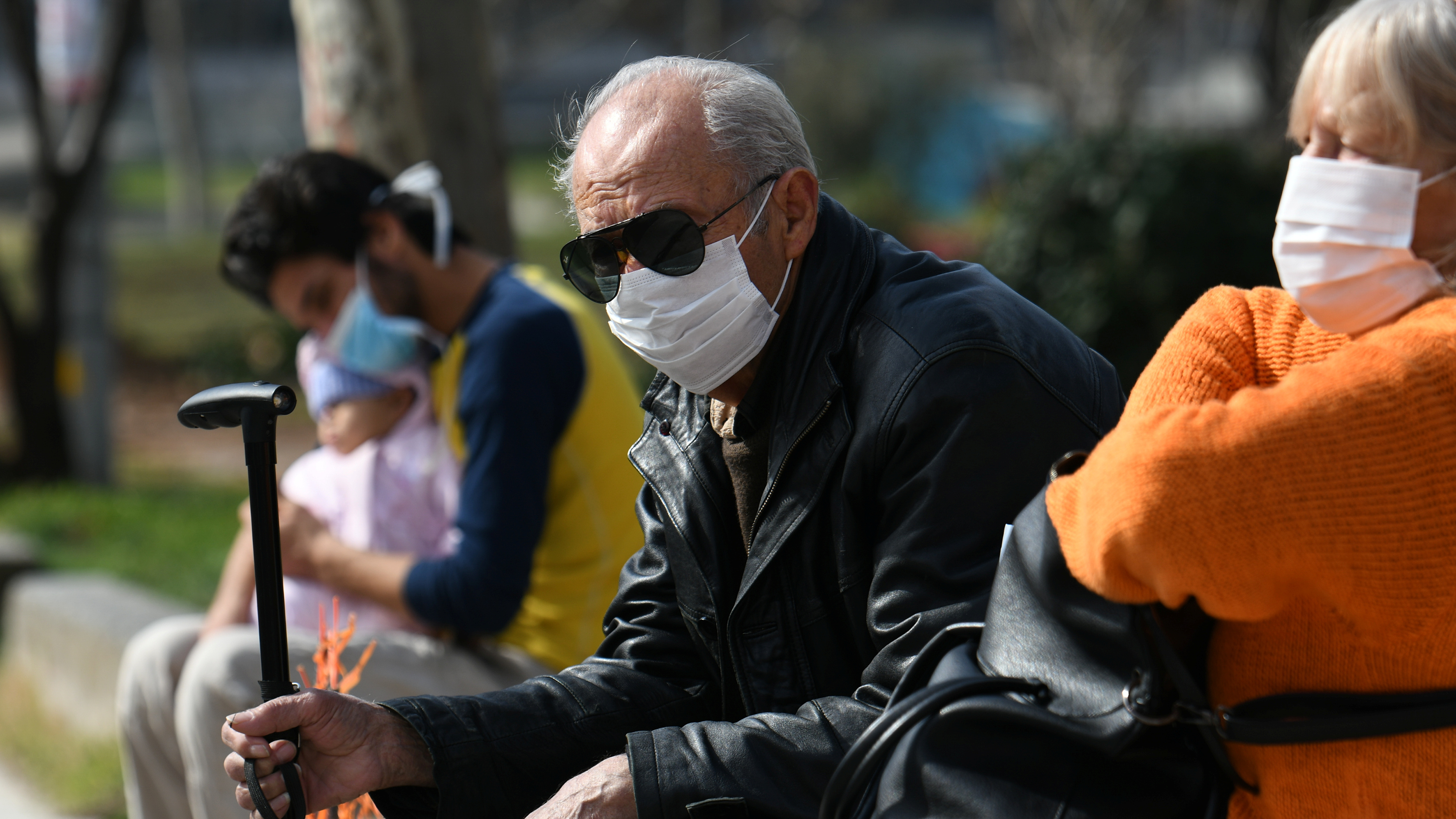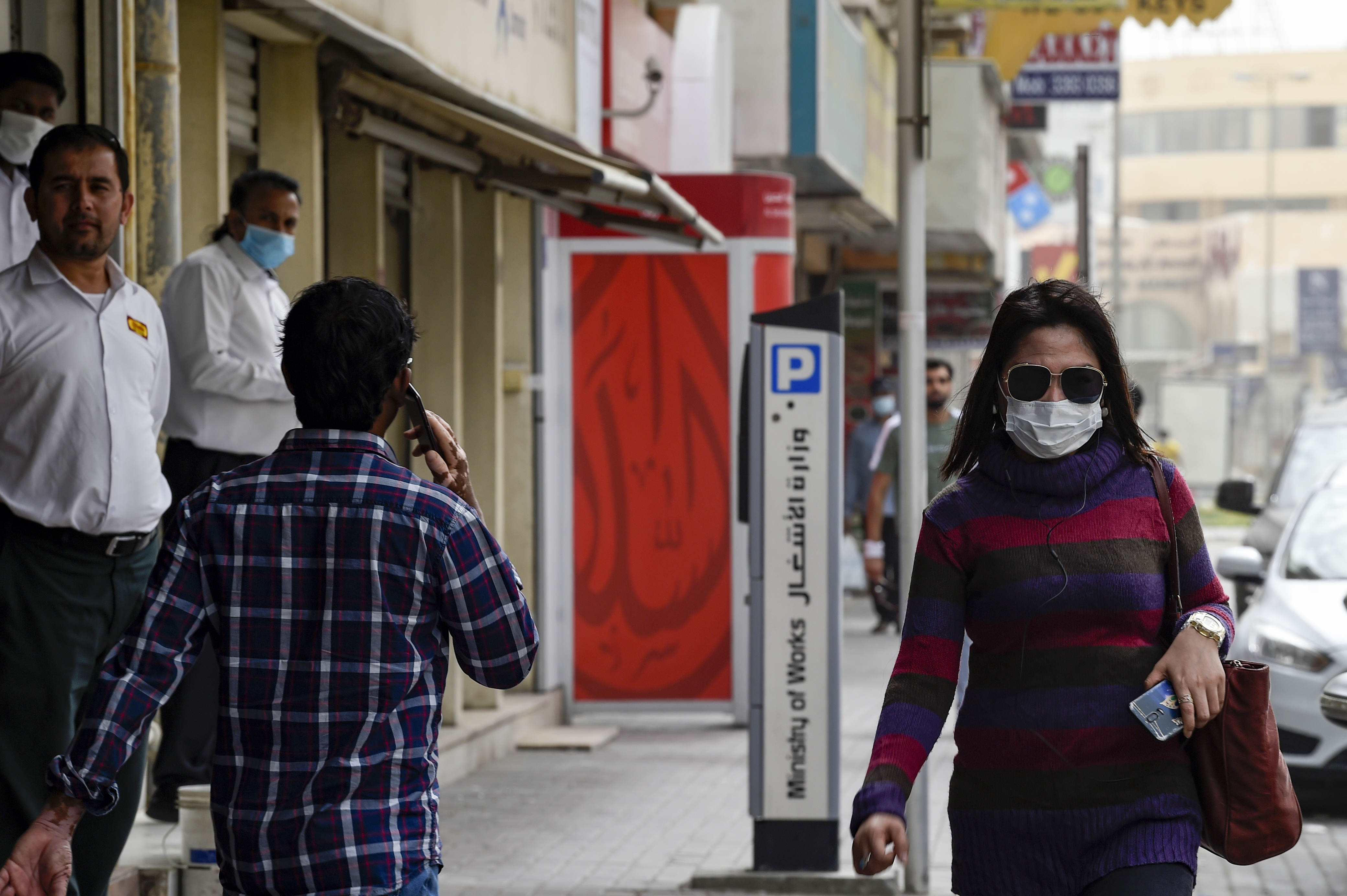
People outside the AHEPA hospital, where the first COVID-19 case in Greece was confirmed. /Alexandros Avramidis/Reuters
People outside the AHEPA hospital, where the first COVID-19 case in Greece was confirmed. /Alexandros Avramidis/Reuters
Public health officials, including experts from the US Centers for Disease Control and Prevention, have floated hopes that COVID-19 could behave in a similar manner to seasonal flu in the northern hemisphere. This could potentially mean the number of those contracting the virus will drop in the coming warmer months.
However, with scientists still collecting data on the behavior of the novel coronavirus, certainty around the trajectory of COVID-19 remains unclear. Here's what we know about the seasonal nature of respiratory viruses.
Could COVID-19 be seasonal?
This is what many businesses and financial markets are hoping for, but the limited time the virus has been around for has made it difficult for scientists to accurately model how the disease will behave in different weather.
"All we have to go on is analogies with other diseases that spread in similar ways," said Paul Hunter, an infectious disease expert at Britain's University of East Anglia.
Scientists in China have said COVID-19 behaves much more like influenza than other closely related viruses, inhabiting both the lower respiratory tracts – like Severe Acute Respiratory Syndrome (SARS), but also the upper respiratory tracts, like influenza.
Many respiratory infections such as flu, coughs and the common cold are influenced by seasonal changes, with humidity, colder weather, and the way people behave during winter all taking a toll on the trajectory of a virus.
In Europe, flu season typically starts around October, with incidences caused by the influenza virus peaking in February and starting to fall in March, according to the UK National Health Service (NHS).

A couple wear face masks in Hong Kong amid the COVID-19 outbreak. /Philip Fong/AFP
A couple wear face masks in Hong Kong amid the COVID-19 outbreak. /Philip Fong/AFP
Why do viruses tend to spread faster during colder months?
"The reason why cold weather is presumed to cause spreading of coughs, colds and flu is that cold air causes irritation in the nasal passages and airways, which makes us more susceptible to viral infection," said Simon Clarke, an expert in cellular microbiology at Britain's University of Reading.
"Respiratory viruses tend to fade away in the warmer months," added Ian Jones, a professor of virology at the University of Reading. "Hot and sunny conditions often inactivate viruses, with people tending to spend more time out and about in summer instead of staying indoors, bringing down the risk of infection."
Beyond human habits in winter months, a large number of respiratory infections, including COVID-19, are passed through droplets produced when people cough and sneeze. These droplets have a propensity to stay in the air for longer when it is colder and drier, increasing chances of infection.

Bahrain has reported 26 cases of COVID-19 in the kingdom, where average daytime temperatures are above 20 degrees Celsius. /Mazen Mahdi/AFP
Bahrain has reported 26 cases of COVID-19 in the kingdom, where average daytime temperatures are above 20 degrees Celsius. /Mazen Mahdi/AFP
How will warmer weather affect COVID-19?
"It's entirely possible that we might get a Springtime lull," said Clarke. "It's unlikely to make things worse, but we don't know for sure – it's an educated guess."
Hunter agreed with this analysis, saying he believes it's likely "that the disease will decline substantially during the summer months in the northern hemisphere."
However, Ian Jones is less convinced: "With seasonal flu, they are variations on what we've already seen before, and therefore you have some immunity. That keeps the infection rate down to an acceptable level."
"With COVID-19, however, there is little immunity among the population as of yet as it is a new virus, coming originally from an animal."
Jones said that because of the novel nature of COVID-19, the naivety in immunity towards the virus could be more comparable with the 2009 outbreak of the H1N1 virus, more popularly known as swine flu.
"Although [swine flu] peaked in winter months, it caused infections throughout the summer. If you imagine the various pressures on COVID-19 – seasonal, immunological – because it's new, the immunological pressures aren't there," said Jones.
"It may slow down, limp along and come back, but we don't actually know. I don't think we're going to see it disappear."
Source(s): Reuters